Gardening can be expensive. When you are growing a homestead garden you want to make sure that the cost of the garden doesn’t exceed the value of the crop that you will reap from it. Here’s some gardening tricks to help you get the most from your garden without breaking the budget.
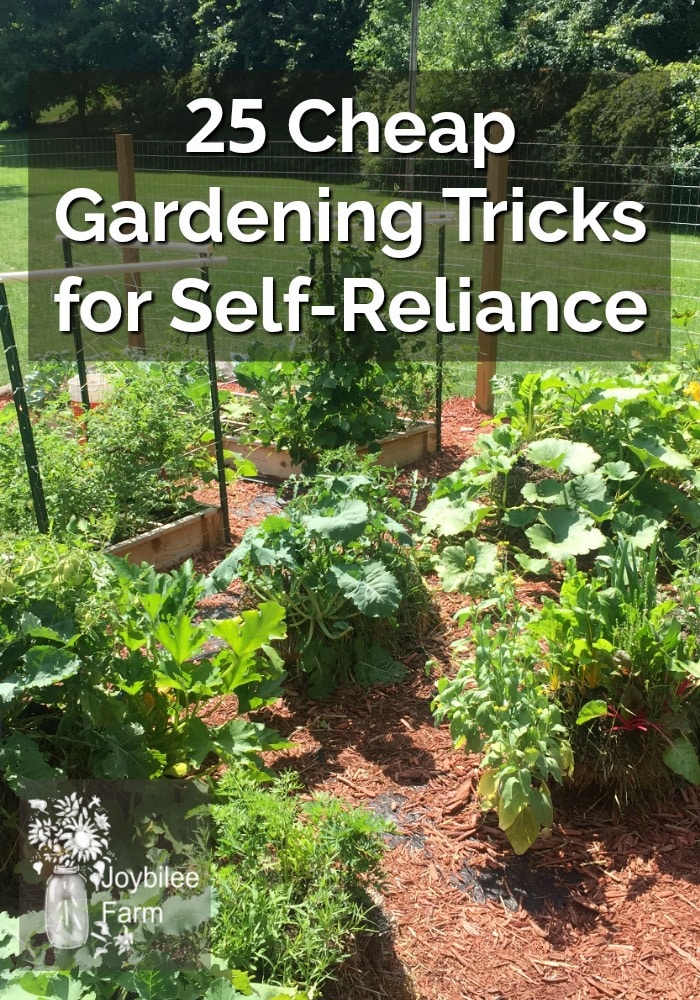
Gardening has many benefits that reach further than the vegetables, greens, and herbs themselves (source). There is an inherent satisfaction in seeing the progress from seed, to plant, to table, that cannot be replicated by other means. Gardening connects us with the seasons in a tangible way, and brings beauty and growth into our lives. It’s also a great health boost, particularly if you add a few stretches in before starting for the day.
1. Recycle for pots and containers
Even if you have a lot of gardening space, you may want to have some containers to use for starting seedlings or for having some tender plants close to the house for easy pickings. Seedlings can be started in pots made out of newspaper. These are sturdy enough to get things going but get fragile after a few weeks. Great if you plan to pop them into the ground but not so great if you want to hold them over for several weeks, while the soil outside warms up. You can make pots out of plastic containers, vitamin pill bottles, juice bottles, Milk bottles.
Be sure and thoroughly wash and disinfect the containers before using them. Non waterproof containers can be made water proof by lining with a plastic bag.
Be sure to add a few drainage holes in the bottom to allow the soil to drain thoroughly after watering. If you line newspaper containers with plastic, do not try to plant them out directly as the plastic will not let the roots through in the same way as plain newspaper pots.
2. When starting seedlings use spices to prevent damping off disease.
One of the good gardening tricks is to use cooking spices instead of commercial anti-fungals. Spices are powerful antioxidants. They contain antifungal, and antibacterial properties. Cinnamon, tumeric, clove, and mustard have strong antifungal properties. I sprinkle the spice on top of the soil when I plant my seeds in pots, in the house to prevent damping off, and to prevent mold growth on houseplants. I reapply the spices periodically after watering.
3. When watering indoor plants add 1 tsp. hydrogen peroxide per 1 litre of water to inhibit fungal disease in the plants.
Hydrogen peroxide increase the oxygen going to the soil, which inhibits fungal and bacterial soil diseases that thrive in anaerobic conditions.
4. Don’t buy fresh seed every year — pre-germinate your seed and plant it.
Buying seed is expensive. Most of us have older packages of seed in storage, and buy new seed, just in case. Instead pre – germinate your seed and only plant the seed that germinates. 100% germination rate. Large seeds like peas, beans and corn can easily be soaked overnight like sprouts, then rinsed and drained for a few days until the seed coat splits and a tiny root appears. Plant immediately. Smaller seed can be germinated on a damp paper towel, inside a plastic sandwich bag and planted into pots, one seed per pot, to grow until the soil warms up. While it seems like a bit of extra work, it allows you to plant for proper spacing and you don’t lose time to unnecessary thinning. The key for this to work is to make sure soil temperatures are adequate before planting outside. As one of the simplest gardening tricks, it is especially relevant if you are planting expensive seed. General germination testing will also help you determine what less-expensive seed you need to replace.
You can also use seeds from foods you consume, like apples, pears, or stone fruit, to grow new plants. This is especially great if you want root stock for propagation, or to try and find new varieties as an adventure.
5. Plant varieties that will mature in the amount of frost free days that you have.
Many vegetables have several options to chose from in seed catalogues. For instance, when looking at cabbages there are some varieties that will be ready to pick in only 65 days, such as the hybrid savoy cabbage “Alcosa,” while others, usually called “Main Season-types” can need as long as 110 days. By choosing varieties for shorter growing seasons, I can usually get a harvest. So when choosing your veggie seeds, consider how long your growing season is and choose accordingly.
6. Save your coffee grounds
You can add coffee grounds directly to the soil, without composting first. It will break down during the growing season and nourish your plants. Coffee grounds are rich in nitrogen. If you need more than you produce yourself, go ask at your local espresso bar. If your local coffee place isn’t involved in the program talk to their Green consultant, and ask them to get it going.
7. Water your containers and seedlings with old coffee and tea
Another fun one of the gardening tricks is to not pour old coffee or tea down the drain. Use it on your potted plants or containers. Its rich in nitrogen, but a bit low in phosphorous. Worried about chemicals in the coffee? Switch to organic, fair trade coffee. This works best on acid loving plants. If you are growing plants that prefer a neutral soil, don’t do this more than once a month.
8. Make plant markers from sticks.
Plant markers can get expensive. Metal markers and clay markers, wear out over the years and the plant names become illegible. Instead grab some 12 inch, straight branches from willow, popular, birch, dogwood or other straight, nonbranching sucker. Carve off a strip of the bark, which is easy to do in the Spring. Write the plant name directly on the wood and pop into the soil. Willow may root over the season, giving you a plant to transplant to another bed. Most other species will behave when pushed into fertile soil as a plant marker.
9. Mulch, you can’t afford not to.
Mulching reduces your needs for fertilizer, water, and weeding. It holds in soil moisture. It breaks down, nourishing your plants, and it prevents weed germination. Not that you won’t need to weed at all. Depending on what you use for mulch there may be weed seeds that germinate, but weeding is easier. Soil stays light and doesn’t compact under a layer of mulch. Mulching can also change soil temperatures. Plastic mulches allow heat through and can warm up soil temperatures in the Spring. Carbon mulches like straw or wood chips, cool soil temperatures and should not be applied until after the soil has warmed up and the plants are off to a good start.
10. Hi-hoe, hi-hoe its off to weed, we go
Using a sharp hoe to cultivate around transplants twice a week can make weeding easy and prevent weeds from getting a firm grip on you garden. Weeds will rob the soil of fertility and slow down plant growth. A sharp hoe uses no gasoline or electricity and gives you easy exercise, too. Its way easier to hoe around plants than to bend over and pluck up the weeds by the roots. Hoe in the morning on a warm day, that you don’t plan to water. This will let the roots of your weeds dry and prevent them from regrowing. If you neglect your hoe you will have more weeding to do as the season progresses.
11. Make compost tea from weeds, manures, and garden waste
One of the easiest gardening tricks is to make compost tea to give plants nitrogen and micro-nutrients to continue rapid growth during the season. We make compost tea in a garbage can from fresh llama and rabbit manure, comfrey leaves, and garden weeds. Fill the can 1/3rd full and top up with water. After 2 weeks the tea is ready to use. Cabbages, cauliflower, and broccoli, and other rapidly growing plants benefit from an application of manure tea at the root zone. Avoid getting it on leaves of plants that you intend to eat. Woad and other dye plants also benefit from applications of compost tea after the first harvest of leaves.
12. Have a plan for the harvest and preserve it.
In the middle of August there are a lot of vegetables coming into the kitchen. Have a plan to use them up or preserve the harvest with drying, canning or freezing so that it doesn’t go to waste. Don’t let it sit in the fridge after harvesting, losing condition. Instead put aside what you can use within 3 days and preserve the rest at the peak of freshness. This will maximize the available nutrients and give you good food to eat all winter, extending the benefits of your summer garden year-round.
13. Don’t leave vegetables past their prime in your garden.
Chard is prolific for me. But chard isn’t my favorite vegetable. When its in its prime so is my lettuce, zucchini, and kale and so the poor chard gets neglected. Harvesting it at its prime and preserving right away, would give me vegetables longer. In February chard is more appreciated. Harvest each vegetable when it is at its peak to maximize nutritional content. And preserve each vegetable right away to extend the benefits of your gardening endeavours year-round. Here’s a recipe that you’ll love to use up that prolific chard!
14. Compost kitchen scraps
I live in bear country. Composting of kitchen scraps is discouraged. But we do compost. By burying compost in ground right in the garden, or under the manure pile we avoid the bear problem and still get a rich soil. You can build a compost bin out of many things from wood pallets to chicken wire. Have some carbon rich additives like straw, dried leaves, or shredded paper. To build your compost pile add nitrogen rich vegetables, coffee grounds, manures. Then top them with the carbonaceous additives. Repeat in layers, finishing with the carbon. If you leave the pile and let it work naturally, you’ll have finished compost in about a year or two. It takes longer if the temperatures are very cold. Less time in a warm climate. You can speed up the process by checking the internal temperature of the compost pile and turning it whenever the pile cools down. I like to throw in red wiggler worms that I find under the mulch in the garden. While not exactly a worm bin, the red wigglers help to speed up the decomposition of the pile. Free fertilizer is always good to have.
15. Encourage beneficial insects
One of the best gardening tricks is to encourage beneficial insects, they help with pollination, eat malicious insects, and predate on certain weed species. Mason bees, bumble bees, parasitic wasps, spiders, to name only a few, work together with you to keep your garden plants free of aphids, and caterpillars. For them to thrive, they need food, homes, and freedom from poisons. You can give them food by planting flowers and nectar sources. Don’t remove sources of weeds for them to lay their eggs. By not cleaning up your garden completely in the fall, you give them room to lay their eggs and ensure that they will show up again next year. I leave a riparian zone around the garden for this purpose. You can also add insect nesting sites to your garden space to encourage their breeding.
16. Get the slugs drunk
Don’t ignore slug damage. Deal with them as soon as you see one. Slugs have a two year lifespan and lay eggs in their second year. They are most active in the early morning and during the night. One slug can totally destroy may weeks of work. The beer cure will help you to rid your garden quickly of slugs. Place a shallow dish in a depression in your garden, pour a small amount of beer into the dish and go out twice a day and pick out the drunks and drown them in a bucket of soapy water. Ducks love slugs and if you have a few you get let them patrol your garden. But be aware that they may also eat your seedlings and munch at the leaves of lettuce and kale. We’ve had the best success by handpicking the slugs and feeding them to the ducks. None get away.
17. Cover plants to prevent insect damage
By covering your growing beds with a light row cover, plants can be protected from marauders like the cabbage butterfly, that lays her eggs on all Kole plants. The eggs hatch into cabbage caterpillars that decimate your crop. Carrot rust fly can be blocked out of your carrot plants in the same way. Gardening tricks to protect your harvest are better than using poisons to control plant predators.
18. If you live in deer country, protect your garden from the critters with a high fence
You can extend the height of a 4 foot fence with rope and fence post extensions gathered from surrounding hedgerows. We weave binder twine from our hay bales, between fence posts extensions to extend the height of the fence to 6 feet and successfully keep out deer, who begin to look lustily at the garden in late September, when the broccoli is beginning to head and the surrounding fields are brown from late summer drought.
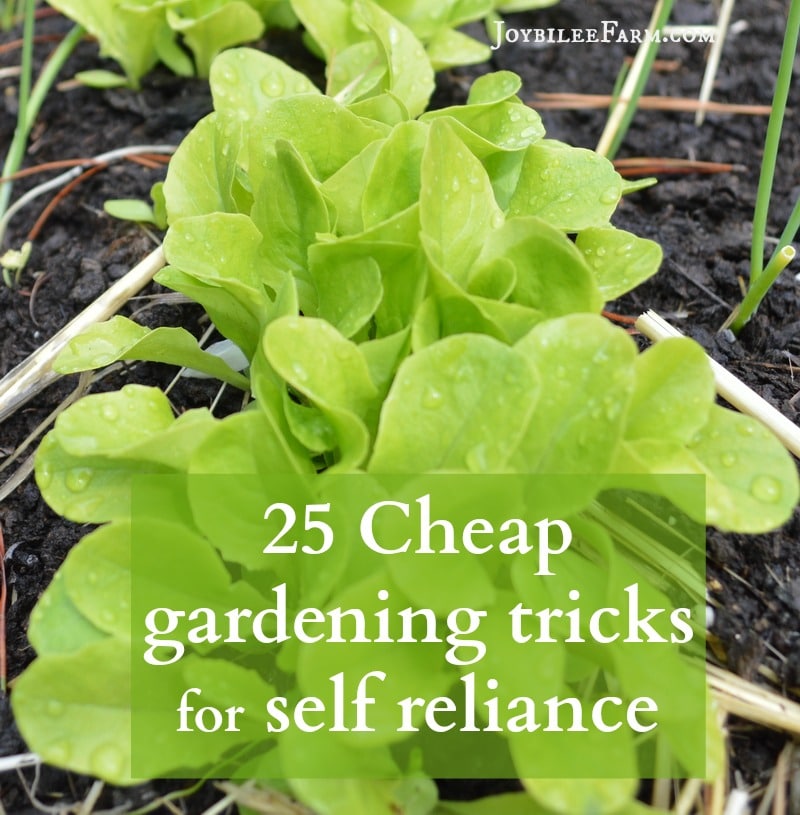
19. Properly space your plants to allow for maximum growth
Many of the current books on gardening suggest very close plantings in small spaces. If you have the space, spread your plants out to allow for maximum growth. They will need less fertility and less water if they aren’t competing with other plants in the same area. Closer spacing doesn’t allow plants like squash and cabbage to fully develop, and leaves you with stunted growth. I usually plant two beds of lettuce, one spaced really close for early spring greens, and another with proper spacing to allow for fully developed heads later in the season.
20. With expensive hybrid seed consider beginning the seed in flats and transplanting out at proper spacing.
If you start them indoors use a growlight so that your plants get the correct amount of light and don’t end up too “leggy.” This maximizes your value from the purchase of expensive seed, because you don’t waste any of the plants. When transplanted out at proper spacing each plant grows to its full potential and you reduce your water usage. If you pay for water, this is one of the very relevant gardening tricks.
21. In areas where water is scarce plant in a hollow rather than using raised beds.
A logical member of the inexpensive gardening tricks arsenal, use your land and rainfall to your advantage. Raised beds work great when water is abundant and soil temperatures are slow to warm up in Spring. Where water is scarce, however, you want to ensure that available water goes to your roots. By planting at wider spacing and planting in a hollow the available soil moisture will go to your plants where it is needed most. Raised beds dry out faster than hollows. However, as hollows also get frost sooner than raised beds you’ll want to take this into account in your planning and protect from frost where necessary.
22. Don’t waste the ashes
Use the ashes from your woodstove (untreated wood only) in your garden to add potassium to root vegetables, especially beets. Ashes will raise the pH of the soil, if you have plants that lean toward being alkaline loving.
23. Keep the pH of your soil between 6.5 and 7.0
Of all the gardening tricks, checking and maintaining your soil will do more than expensive additions and fertilizers. You want to keep the soil pH between 6.5 and 7 for most vegetables. So check your soil pH and don’t add so much wood ash that the soil pH locks up essential nutrients from your plants. Soils with a pH above 7.5 will prevent plants from absorbing trace elements. Acid soils below 5.0 will lock up phosphorous . Calcium, magnesium, and potassium also leach out of acid soil. Soil pH can be raised by the addition of bone meal, oyster shells, lime and ashes. If the soil becomes too alkaline. You can amend alkalinity by adding pine needles, sawdust or wood chips, peat moss or leaf mould.
24. Plant marigolds and other companion plants
When you’re planting the plants anyway, one of the quickest gardening tricks is to use companion planting to prevent pests. Marigolds are amazing plants. They are strongly scented and discourage some insect pests. But their main benefit is in their roots. They discourage soil nematodes, soil pests that destroy the roots of your plants before they even begin to fruit. When soil nematodes abound in your soil, yields suffer and get worse each year. Marigolds of the tagete species discourage soil nematodes and cleanse the soil. Harvest the heads for a bright yellow natural dye. Save a few plant for seed. The flower heads produce seed through insect pollination, so you might needs a few plants outside your greenhouse for strong, viable seed each year. Seed from 10 flowers will keep you in marigolds each year.
25. Plant green manures in the fall (Fall rye, winter wheat)
This may not seem like one of the logical gardening tricks. But, each fall, when you are putting your garden to bed, rototill the beds and plant a green manure like fall rye or winter wheat. The green manure will add fertility to the soil and keep the garden beds from blowing away in the wind or hardening in the cold and snow. In the Spring, once the soil can be worked, allow the green manure to grow to a height of 6 inches to a foot and till it in. Till in about 6 weeks before the final frost in your area. The green manure will decompose quickly and be ready to plant in a month.
Get more useful tips by subscribing to the Joybilee Farm newsletter and pick up my Free eBook, “4 keys to Food Security and Homestead Abundance” to help you with your gardening plans this season.
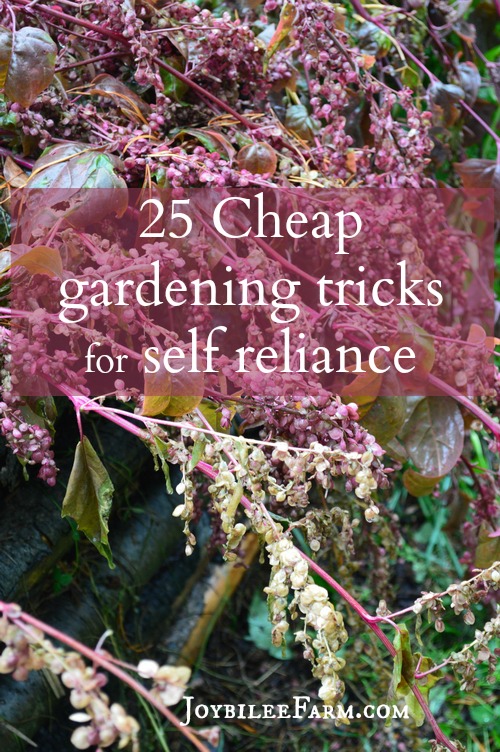
Your turn:
What tricks and tips can you share for successful gardening? Leave a comment.


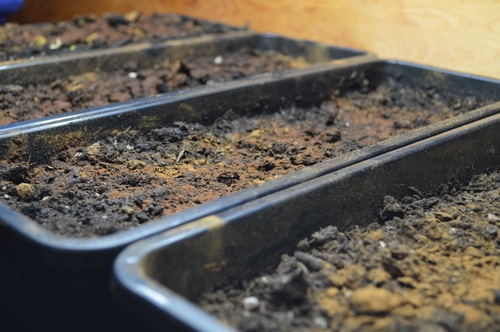
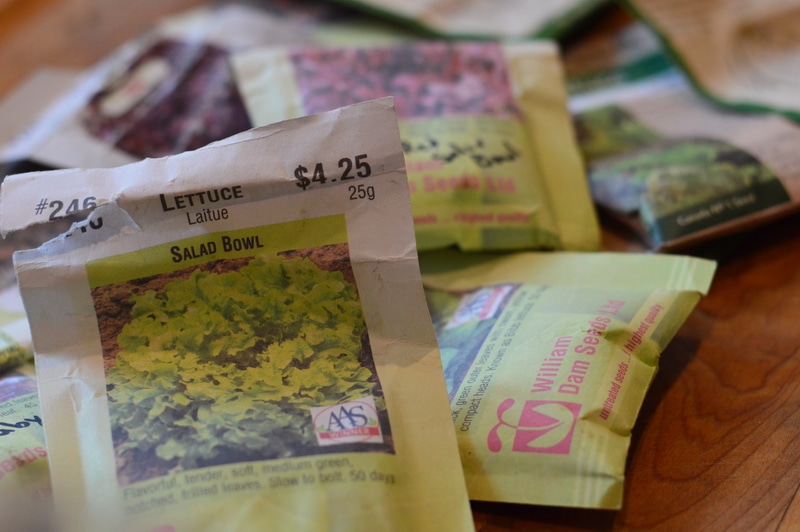
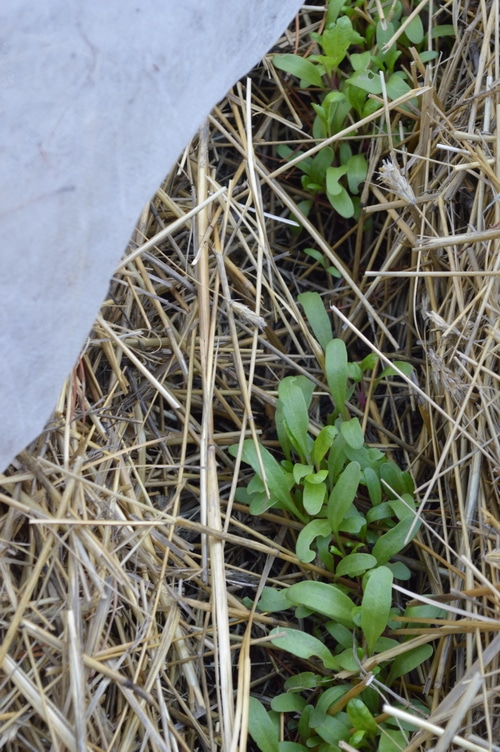


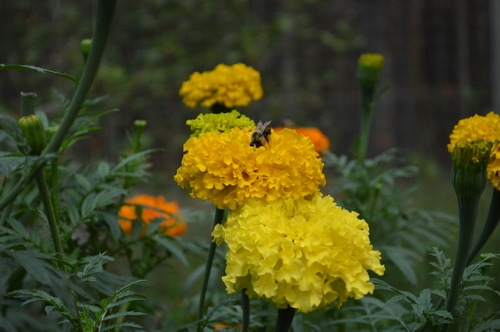

Very helpful for first time planters just moved into home last year and thought we would try to grow veggies &strawberries started to late we’re in Pa so lots of stuff is taking forever can you tell me when best time to start a garden would be?